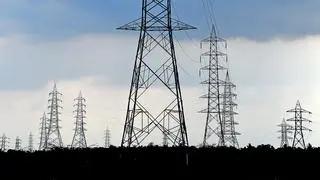Wholesale price index (WPI)-based inflation rose to an eight-month high in November as vegetables, onion and fuel became more expensive, indicating that retail prices could see a further uptick in the coming months.
Though wholesale prices are no longer monitored by the RBI for fixing interest rates, they provide an indication of possible trends in retail inflation.
In its Monetary Policy statement on December 6, the RBI had marginally raised its inflation forecast for the second half of the fiscal and analysts expect wholesale prices to be on the rise as well. Official data released on Thursday showed that WPI inflation rose by it sharpest pace this fiscal to 3.93 per cent in November. It had been 3.59 per cent in October this year, and 1.82 per cent in November last year.
Prior to this, WPI inflation expanded by its sharpest pace in March, at 5.11 per cent. Meanwhile, the rate of inflation based on the WPI Food Index rose to 4.1 per cent in November from 3.23 per cent in October.
Retail inflation
Retail inflation, based on the Consumer Price Index, hit a 15-month high of 4.88 per cent in November, according to data released earlier this week.
According to the WPI data, wholesale prices of onion rose a whopping 178.19 per cent in November, against 127.04 per cent in October. Similarly, WPI inflation in vegetables rose 59.8 per cent in November, compared to 36.61 per cent in October.
However, the wholesale prices of proteins such as eggs, milk and fish rose at a slower pace of 4.73 per cent during the month, against 5.76 in the preceding month.
The WPI inflation of food articles increased 6.06 per cent last month, against 4.30 per cent in October, while that of LPG rose by 31.3 per cent in November, against 26.53 per cent in the previous month.
However, for the whole fuel and power segment, WPI inflation rose at a slower pace of 8.82 per cent in November compared to 10.52 per cent in the month ago.
For manufactured goods, it was at 2.61 per cent during the month, almost static against 2.62 in the preceding month.
Upside risks
“Upside risks to WPI inflation are form lower rabi crop and increase in crude oil prices due to efforts by OPEC member countries to curb oil production,” said CARE Ratings.
Pointing to the high crude oil and commodity prices as well as the base effect for primary food inflation, Aditi Nayar, Principal Economist, ICRA, said: “We expect the WPI inflation to rise further to above 4 per cent in December 2017, before easing to a range of 3.2 per cent to 3.5 per cent in the fourth quarter of the fiscal.”







Comments
Comments have to be in English, and in full sentences. They cannot be abusive or personal. Please abide by our community guidelines for posting your comments.
We have migrated to a new commenting platform. If you are already a registered user of TheHindu Businessline and logged in, you may continue to engage with our articles. If you do not have an account please register and login to post comments. Users can access their older comments by logging into their accounts on Vuukle.